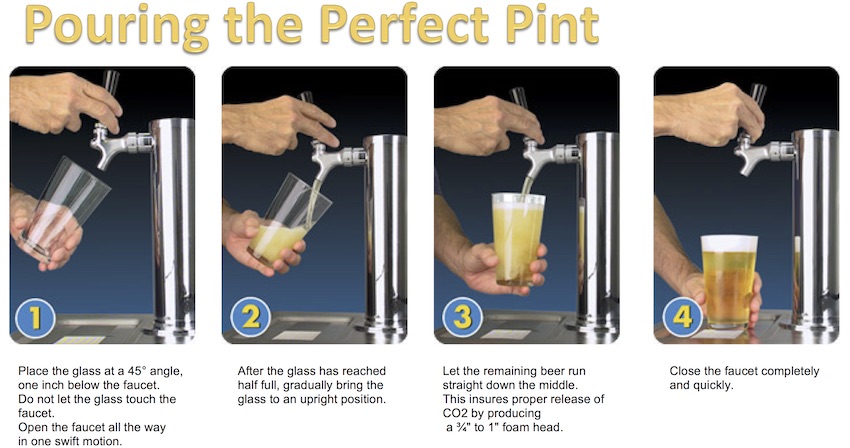Retail Resources
Line Cleaning
![]()
Line Cleaning
Draft maintenance is essential to the quality of your beer. Beer spoiling bacteria will ruin a beer’s flavor and aroma. This will inevitably lead to lost repeat business and potential sales. The likelihood of an educated beer drinker returning to a bar with dirty draft lines drops dramatically.
Caustic Cleaning
To ensure beer freshness, lines should be cleaned at a minimum every 2 weeks. This should be done with a caustic solution at a 2% or greater concentration. Older lines or more problematic lines should use a 3% or greater concentration. Using an electric pump, caustic solution should be circulated through your lines at a minimum of 15 minutes and at a velocity of 2 gallons per minute. If using a static method, the solution needs to be left in the lines for a minimum of 20 minutes.
Acid Cleaning
Over time beer lines get minerals and calcium build up commonly referred to as “beer stone”. Acid cleaning dissolves these minerals. An acid cleaning should be done quarterly (every 3 months)
It is important to note that caustic and acid solution can be extremely dangerous if direct contact occurs to the skin or eyes. ALWAYS use protective eyewear and gloves when handling caustic and acid solution. Your safest bet is to contact a professional to perform all of your cleaning needs.
Storage & Off Flavors
Storage & Off Flavors
Storage
Proper storage and rotation is critical to the freshness of beer.
If beer has no date: Non-pasteurized beer will last 45 – 60 days. Pasteurized beer will last 90 – 120 days. Optimal storage temperature is 38°.
Off Flavors
Off flavors in beer can come from many sources. It could come from many origins such as brewing technique, brewer’s yeast, bacteria and also from poor storage and improper serving practices.
 Lightstruck (skunking) Lightstruck is perceived as a skunk-like flavor. The flavor occurs when beer is exposed to sunlight or artificial light. Chemicals derived from hops are naturally altered in the presence of light to form the Sulphur compound 3-methyl-2-butene-1-thiol. This can be prevented by keeping beer out of direct light and rotated properly to ensure freshness.
Lightstruck (skunking) Lightstruck is perceived as a skunk-like flavor. The flavor occurs when beer is exposed to sunlight or artificial light. Chemicals derived from hops are naturally altered in the presence of light to form the Sulphur compound 3-methyl-2-butene-1-thiol. This can be prevented by keeping beer out of direct light and rotated properly to ensure freshness.
 Oxidation Oxidation is perceived as a wet cardboard, old paper flavor. The flavor occurs when beer is exposed to oxygen at temperatures over 80°F. The beer will transform and seem lifeless and bland. The technical term for beer oxidation is Trans-2-Nonenal. This can be prevented by keeping beer in the cooler, or at room temperature.
Oxidation Oxidation is perceived as a wet cardboard, old paper flavor. The flavor occurs when beer is exposed to oxygen at temperatures over 80°F. The beer will transform and seem lifeless and bland. The technical term for beer oxidation is Trans-2-Nonenal. This can be prevented by keeping beer in the cooler, or at room temperature.
 Acetaldehyde Acetaldehyde is perceived as green apples or latex paint flavor. It is an intermediate compound in the formation of alcohol. Some yeast strains produce more than others, but generally its presence indicates that the beer is too young and needs more time to condition. This can also be a sign of infection.
Acetaldehyde Acetaldehyde is perceived as green apples or latex paint flavor. It is an intermediate compound in the formation of alcohol. Some yeast strains produce more than others, but generally its presence indicates that the beer is too young and needs more time to condition. This can also be a sign of infection.

Diacetyl Diacetyl is perceived as butter or buttered popcorn. It is desired to a degree in many ales, but in some styles and circumstances it is unwanted and may even take on rancid undertones. Diacetyl can be a result of the normal fermentation process or the result of a bacterial infection.

Dimethyl Sulfide (DMS) DMS is perceived as a creamed corn or cooked vegetable flavor. Like diacetyl, it is common in many light lagers and is considered to be part of the character of the beer. When caused by bacterial infection, DMS has a more rancid character. If caused by infection, it is typically the result of poor sanitation.
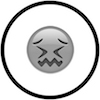
Infection Infection is perceived in many different forms. Often times the flavor is sourness or the aforementioned diacetyl and acetaldehyde (see above). Infection is caused by bacteria build up in draft lines. This can be prevented by regular line cleaning.
Beer Clean Glassware
![]()
Beer Clean Glassware
Have you ever been served a “flat” beer, with bubbles stuck to the side of the glass with no head? Fingerprints on the glass? Lipstick on the rim (gross!)? If you’ve encountered any of these either at home or at a bar, your glass wasn’t “beer clean”. A beer clean glass should have a tightly formed head of foam at the top of the glass with no bubbles clinging to the side of the glass.
Steps to a proper “beer clean” glass:
- Empty dirty glass into open drain
- Wash with sud-less (non petroleum) soap and brush
- Rinse with cold water – “heel in, heel out”
- Sanitize
- Dry (on drying rack, never towel dry)
- Rinse with cold water just before dispensing.
Testing for “beer clean” glassware:
Without Beer:
- Sheeting and Spotting Test
- Salt Test
With Beer:
- Head Size
- Lacing as beer is consumed
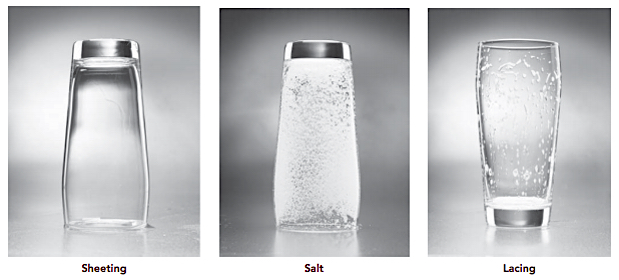
Proper Glassware
Proper Glassware
The geometry of glassware affects the beer looks, smells, & tastes. Clear is always the best and the size of the glass is based on style and alcohol content.
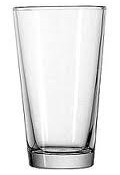
Shaker – Originally designed to shake cocktails, in the 80s became a popular vessel to serve draught due to its large size. Not a great beer glass, in fact probably the worst. Not attractive nor flattering to flavor or aroma. In fact, craftbeer.com published a story on 10/31 about the use of shaker glasses and Vinnie and Natalie Cilurzo, founders of Russian River Brewing Co, are dead set against it.
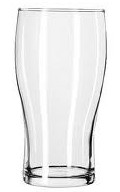
English Tulip – 20th century glass used mainly for Irish Stouts.
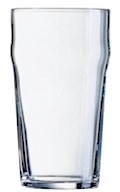
Nonick Pint – English ales (session beers) since early 60’s. Bump keeps glasses from getting chipped (No-Nick!) and makes it easier to hold.
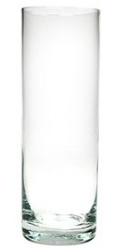
Kolsch/Stange – (SHTANGUH) Light, tall, thin. Designed for quick, refreshing consumption.
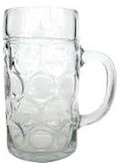
Bavarian Seidel – One of the largest glasses made for beer. Its handle helps the consumer hold the large glasses without dropping or spilling liquid. Popular for German pils, Helles, and Oktoberfest.
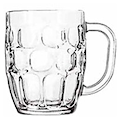 English Dimpled Mug – Wide and thick used for mild ales and bitters.
English Dimpled Mug – Wide and thick used for mild ales and bitters.
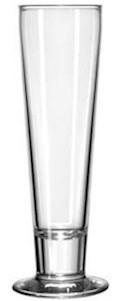
Tapered Pils – Narrow shape shows off the color, the outward taper supports the head and the foot provides a solid base.
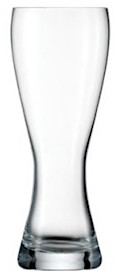
Weissbier Vase – Perfect for German Wheat beers, the inward taper near the top concentrates foam and holds aroma. Often times the glass is wetted first to break out the surface tension so that the higher carbonated German beer can be poured without excess foam.
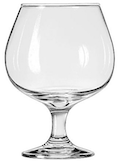
Snifter – Popularized for brandy and great for barley wines and imperial stouts. Deep incurved rim and small stature, it’s ideal for serving strong ales.

Stemmed Tulip (or Poco Grande Libbey): Inward taper holds aroma, outward flare supports and fits the lips, many ways the best of both worlds. Started showing up in 19th century.
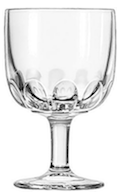
Bolleke Goblet: Popular in Antwerp, Belgium, the smaller size is great for strong beers. Inward taper concentrates head and aroma.
